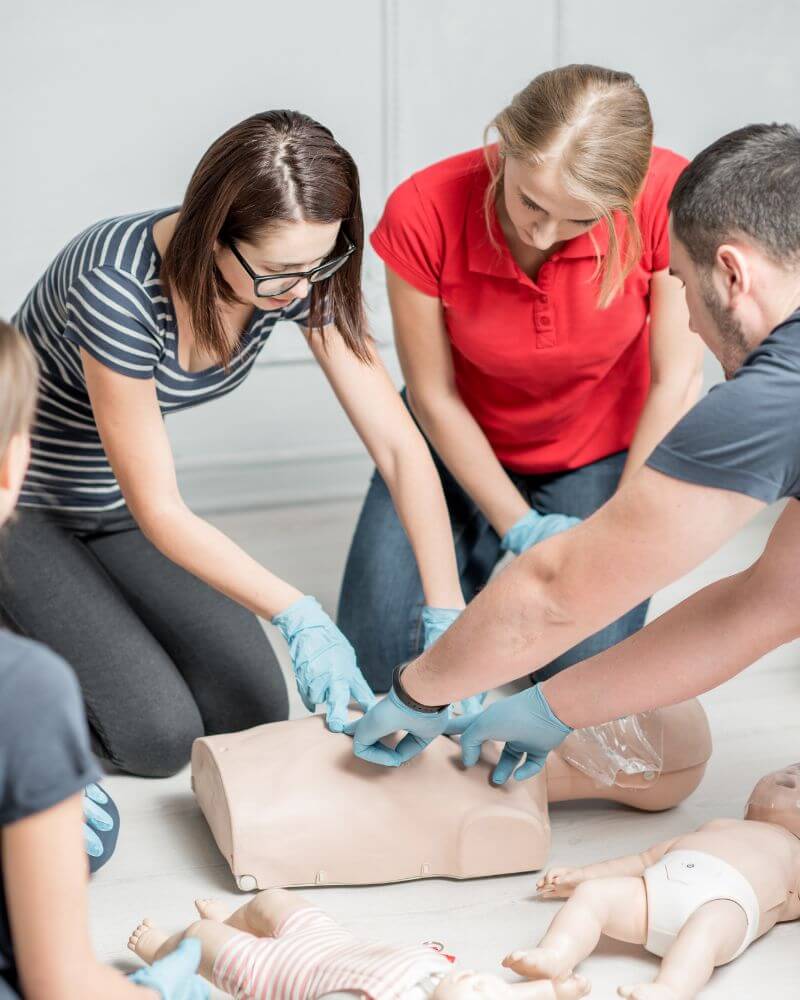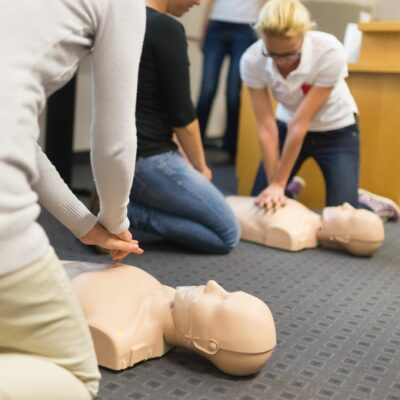Introduction
In an unpredictable world, recognizing exactly how to conserve a life can be one of the most effective skill one can possess. Cardiopulmonary resuscitation, commonly referred to as mouth-to-mouth resuscitation, is a critical device in emergency situations where someone's heartbeat has actually stopped. here It's crucial for not just healthcare professionals yet likewise First Aid Courses for man in the streets that desire to make a difference. This extensive post looks into the nuances of CPR, including its importance, techniques, and the comprehensive training provided in mouth-to-mouth resuscitation courses.
Understanding mouth-to-mouth resuscitation: The Lifesaving Abilities Educated in Mouth-to-mouth Resuscitation Courses
CPR is greater than simply a series of compressions and breaths; it is a lifesaving strategy that incorporates knowledge with useful abilities. Comprehending mouth-to-mouth resuscitation entails recognizing when it is essential and carrying out the suitable steps effectively. The main objective of CPR is to maintain blood circulation to essential body organs till professional medical assistance arrives.
Why Is Learning CPR Important?
Lifesaving Potential: One of one of the most engaging reasons to discover mouth-to-mouth resuscitation is its capacity to save lives. According to the American Heart Organization (AHA), prompt CPR can double or even triple a sufferer's possibility of survival after heart arrest.
Common Occurrences: Cardiac arrests can occur anywhere-- in your home, work, or public locations. Having people trained in CPR enhances the possibility of timely assistance.
Empowerment: Knowing CPR equips individuals with the confidence and capacity to act emphatically throughout emergencies.

Community Impact: An area geared up with people trained in first aid and CPR produces more secure settings for everyone.
What Are the Goals of an Emergency Treatment Course?
First help programs commonly aim to furnish participants with vital abilities needed in emergencies:
- Understanding Basic Life Assistance (BLS): Individuals learn about airway monitoring, taking a breath support, and circulation restoration. Identifying Emergencies: Training includes acknowledging various emergency situations like choking, drowning, or heart attacks. Learning Techniques: Practical sessions focus on hands-on discovering of methods such as upper body compressions and rescue breaths.
Types of mouth-to-mouth resuscitation Courses Available
There are various kinds of CPR programs offered relying on individual requirements:
Basic Life Assistance (BLS):- Aimed at doctor and professionals. Covers grown-up, youngster, and infant resuscitation techniques.
- Designed for laymans or non-healthcare professionals. Emphasizes first aid basics together with adult/child/infant resuscitation.
- Convenient choice for those with tight schedules. Often includes video clip demonstrations yet does not have hands-on practice unless combined with in-person sessions.
- Tailored programs created for certain office environments. Focus on pertinent scenarios employees may encounter.
What Skills Are Covered in Emergency Treatment and CPR Courses?
1. Recognizing Emergencies
Participants learn how to determine important circumstances needing treatment quickly.
2. Carrying Out Upper Body Compressions
Chest compressions are fundamental in preserving blood circulation during heart arrest.
3. Carrying Out Rescue Breaths
Breathing strategies make certain oxygen reaches crucial organs when somebody can not take a breath independently.
4. Using an Automated External Defibrillator (AED)
Training often consists of just how to make use of an AED properly, which can bring back regular heart rhythms.
5. Taking Care Of Choking Incidents
Students are instructed just how to execute stomach thrusts on choking victims both grownups and infants.
6. Taking Care Of Various Other Clinical Emergencies
Courses might likewise cover different clinical circumstances like strokes or extreme sensitive reactions.
The Importance of Certification After Finishing a Course
Obtaining an emergency treatment certificate after finishing your training is essential for several factors:
- It validates your abilities and knowledge. Many offices need accreditation for specific roles. It constructs trustworthiness amongst peers and employers concerning your readiness to react in emergencies.
Detailed Description of Trick Techniques Taught in Mouth-to-mouth Resuscitation Courses
Chest Compressions: The Foundation of CPR
Chest compressions are arguably the most vital facet of executing efficient cardiopulmonary resuscitation because they flow blood with a target's body also when their heart has stopped defeating:
- Place your hands at the facility of the person's chest. Keep your joints right while pressing down hard and fast at a price of 100-- 120 compressions per minute. Allow complete chest recoil between compressions for optimal blood flow.
Rescue Breaths: Offering Oxygen When It Matters Most
After every 30 upper body compressions, it is important to give 2 rescue breaths if trained:
Open the airway by tilting the head back slightly. Pinch the nose closed while sealing your lips around their mouth. Give 2 breaths lasting regarding one second each while looking for chest surge before proceeding compressions.Recognizing Cardiac Arrest vs Other Emergencies
Understanding when to initiate CPR can be complicated but is extremely important:
- Look for unresponsiveness combined without typical breathing or pulse-- this indicates cardiac arrest. In instances where there is still breathing however it shows up abnormal (gasping), call emergency services promptly before proceeding with rescue efforts.
Using AEDs Efficiently Throughout Emergencies
An Automated External Defibrillator (AED) supplies clear instructions using aesthetic prompts and voice commands:

FAQs Regarding Recognizing CPR
Q1: How much time does it take to finish an emergency treatment course?
A: The majority of first aid programs last between 4-- 8 hours depending upon web content depth; advanced qualifications might require longer sessions topped several days.
Q2: Can I take a first aid course online?
A: Yes! Many organizations use blended learning choices where theoretical parts are finished online followed by functional assessments in person.
Q3: Is accreditation legitimate indefinitely?
A: No; qualifications generally need revival every two years due to developments in guidelines and practices within emergency reaction training markets like those included with first aid programs or BLS qualifications specifically concentrated on effective treatment shipment approaches throughout dilemmas encountered throughout different atmospheres-- from homes through workplaces!
Q4: Will I learn exactly how to assist children or infants?
A: Yes! The majority of high quality programs cover techniques customized particularly toward pediatric individuals together with adult-focused training components guaranteeing broader applicability throughout age groups during emergencies came across day-to-day within our communities!

Q5: What are some usual misunderstandings regarding performing CPR?
A: A prevalent false impression is that you must not attempt any kind of kind up until experienced specialists show up; nonetheless acting quickly can dramatically enhance end results if initiated correctly making use of information obtained with structured programs like those provided within Emergency treatment & & CPD settings!
Q6: Do I need any special tools for my training session?
A: Typically speaking all essential products will be provided by instructors including manikins utilized technique circumstances involving both compression-only variations alongside traditional rescue breath styles making certain comprehensive understanding Go to this site gained throughout coursework carried out within assigned timeframes allocated accordingly based upon individual schedules/preferences!
Conclusion
In final thought, understanding cardiopulmonary resuscitation (CPR) furnishes individuals with life-saving skills that can mean the difference in between life and death during emergency situations including cardiac arrest or other health dilemmas needing immediate intervention before professional aid shows up! Enlisting on your own into accredited emergency treatment training courses ensures you're prepared needs to an unfortunate event occur around you-- encouraging not only individual self-confidence however likewise cultivating community durability general! Whether you select on the internet classes combined finding out strategies conventional classroom configurations eventually leads towards getting beneficial insights improving reaction capabilities reacting effectively in the middle of unpredictability encountered on a regular basis browsing unforeseeable scenarios fundamental daily living experiences shared jointly across culture today!
By prioritizing education and learning bordering these important topics we create much safer atmospheres promoting stronger links between people making entire communities healthier holistically moving forward together united purposefully towards achieving common goals visualized throughout shared journeys in advance filled up assurance hope more vibrant futures await us all-- one heart beat at time!